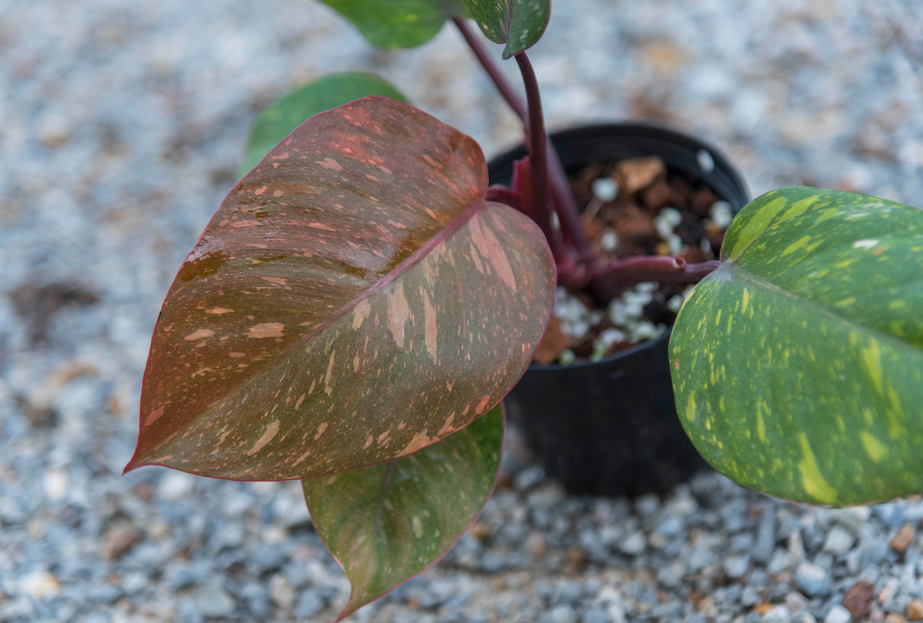
The Philodendron Orange Princess is a stunning and unique variety of philodendron, known for its striking, vibrant orange-tipped leaves. This rare and exotic houseplant has become a favorite among collectors and plant enthusiasts due to its bold color and beautiful foliage. If you're lucky enough to own a Philodendron Orange Princess, here’s everything you need to know to care for it and keep it healthy and thriving.
The Philodendron Orange Princess thrives in bright, indirect light. While it can tolerate some lower light conditions, it’s best to place this plant in a location where it receives plenty of bright, filtered light, such as near an east- or west-facing window. Direct sunlight can scorch its delicate leaves, causing brown spots or faded colors. If the plant is not receiving enough light, the vibrant orange tips may not develop, and the overall growth may slow down.
Like many philodendrons, the Philodendron Orange Princess prefers to have its soil kept slightly moist, but it doesn’t like to sit in water. Water your plant when the top 1–2 inches of soil feel dry to the touch. Be sure to water thoroughly, allowing the water to flow through the drainage holes at the bottom of the pot. Avoid leaving water in the saucer to prevent the roots from sitting in water, which can lead to root rot.
During the growing season (spring and summer), you may need to water your plant more frequently, while in the fall and winter, when growth slows down, reduce watering. Overwatering can cause the plant’s leaves to yellow and may lead to root rot, so be cautious and avoid watering too often.
Philodendron Orange Princess thrives in a well-draining, rich potting mix. A high-quality houseplant mix or a mixture of peat moss, perlite, and pine bark will work well. Proper drainage is essential to keep the roots healthy, so ensure your pot has good drainage holes.
Repot the plant every 1 to 2 years or when it outgrows its pot. Choose a slightly larger pot to accommodate the plant’s root system, and refresh the soil to ensure it has the proper nutrients for growth. If you notice the roots becoming cramped or growing out of the drainage holes, it’s time to repot.
As a tropical plant, the Philodendron Orange Princess thrives in warm and humid environments. Keep the temperature between 65°F - 80°F (18°C to 27°C) for optimal growth. Avoid placing the plant in areas where temperatures dip below 50°F (10°C), as it may damage the leaves and stunt growth.
This plant prefers high humidity. If your home’s air is too dry, especially during the winter months, you can increase ambient humidity by using a humidifier or placing the plant on a humidity tray. Regular misting or grouping it with other plants can also help maintain higher humidity levels, ensuring healthy, lush foliage.
During the growing season (spring and summer), the Philodendron Orange Princess benefits from regular feeding. Use a balanced liquid fertilizer diluted to half strength and apply it once a month. Fertilizing will provide the nutrients needed for strong growth and vibrant foliage.
In the fall and winter, when the plant is not actively growing, reduce the frequency of fertilization. Over-fertilizing can cause salt build-up in the soil and may lead to leaf burn, so be cautious when feeding the plant.
The Philodendron Orange Princess is a relatively low-maintenance plant that doesn’t require much pruning. However, you can remove any yellowing or dead leaves to maintain a clean and healthy appearance. If the plant becomes too leggy or overgrown, you can cut back the stems to encourage bushier growth. Use clean, sharp scissors to avoid damaging the plant.
To promote healthy growth, wipe the leaves occasionally with a damp cloth to remove dust and debris. This will help your plant absorb more light and keep its foliage looking glossy.
Unfortunately, like many other philodendrons, the Philodendron Orange Princess is toxic to pets if ingested. It contains calcium oxalate crystals, which can cause irritation to the mouth, throat, and digestive tract of pets. Keep this plant out of reach of curious pets, such as cats and dogs, to ensure their safety.